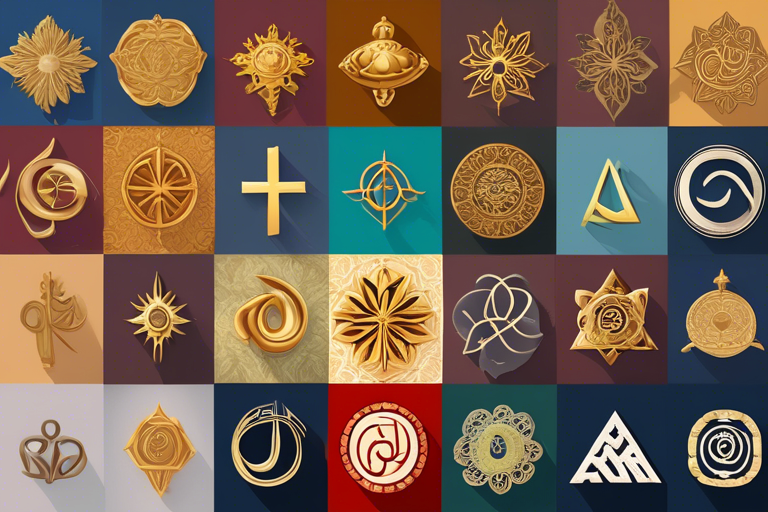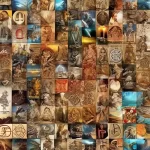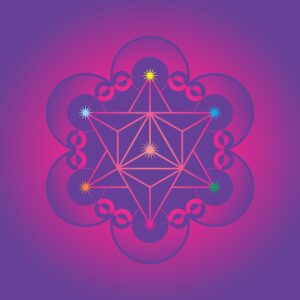
Crystals, Sigils, Symbols & More
A Comprehensive Guide
Many who study the esoteric are mystified or even bewildered by the sheer diversity of symbols, talisman, sigils and objects of importance. This is such a vast subject, many tombs have been written upon it from the likes of Stephen Skinner to the late H.E. Waite and many more.
What do all of these things mean? How can a person uninitiated to the esoteric begin to understand this matrix of varying esoteric objects and symbols?
In this piece we’re going to break things down into three areas of elucidation:
Symbols: Most commonly associated with religions, but also engraved upon many objects and with a wide berth of correlations, meanings and intentions.
Sigil’s: Often associated with specific deities, talisman and ritual magic
Objects: Crystals, Charms, Talisman and even Totems and Effigies, associated in a timeless manner with everything from purity to protection.
In this three part piece we will be touching upon numerous topics such as Grimoires (writings of ritualistic magic), Phylacteries (protective objects designed for specific situations) as well as the pantheon of Symbols and Sigils which encompass the entirety of human history.
These are each extremely large topics and we could go very deeply into any one of them – as countless books upon each attest to.
Our goal in this series isn’t to offer the reader a detailed view of each, but rather an understanding of the context of each. The differences, the meanings and the common associations.
An important part of this topic is to also consider the context(s) of each of them. Religious, Spiritual and Cultural iconography and customs have varied tremendously over time. Today we live in a very interconnected world where past lines of clear delineation or theological dogma built walls of understanding between many of them – what’s one person’s Idol is another’s God.
We will attempt to remain neutral at all turns and to give an explanation rather than a judgment, since the validity of all of these things remains mysterious and subjective, we will not try to decipher and leave it to you, the reader, to make your own judgements.
Part 1:
History of Mainstream Religious & Spiritual Signs & Symbols
Note: It is very important to note the difference between a cult and a religion before we even begin this article. For our intents and purposes we are going to leave the newer, more negative connotation of ‘cult’ behind entirely, since we are speaking of symbols used historically and in a positive context. The context of religion is also equally important, since the misuse of, or misattributing of, religious symbology can be deeply offensive to some. What this article’s attempt to do is merely discuss the importance of the symbologies and symbols employed historically, and the differences between differing belief systems. We realize this is a tightrope to walk – some will view a symbol negatively while others positively, and definitions vary from tradition to tradition.
Throughout history, human beings have sought to connect with the divine and explore the depths of spirituality. One way this connection has been fostered is through the use of spiritual symbols. These symbols, found in various cultures and religions, serve as powerful tools for communication, contemplation, and worship. From the ancient civilizations of Egypt and Mesopotamia to the modern practices of Christianity and Buddhism, spiritual symbols have played a significant role in the human quest for meaning and understanding.
Origins and Significance of Spiritual Symbols
Spiritual symbols are signs and images that hold specific meanings and represent various beliefs, ideas, or concepts related to spirituality. They serve as visual representations of the forces that govern our lives and help us connect with these forces on a deeper level. These symbols have been used for centuries to convey complex ideas and truths, acting as a bridge between the material and the spiritual realms.
One of the most ancient spiritual symbols is the Yin and Yang, originating from China. This symbol represents the concept of balance and harmony between opposing forces. The black and white halves of the symbol represent the duality of life, such as good and evil, light and dark, and masculine and feminine energies. The Yin and Yang symbol teaches us that these opposing forces are interconnected and interdependent, and that true harmony can only be achieved through their balance.
Another significant spiritual symbol is the Hamsa, which originated in the Middle East. The Hamsa is a hand-shaped symbol that represents protection and is often combined with the Evil Eye to ward off harm. According to legend, anyone who looks at a person carrying the Hamsa with evil intentions will be unable to cause them harm. The Hamsa serves as a powerful talisman for protection and good luck.
 The Symbolism of Ancient Spiritual Belief Systems
The Symbolism of Ancient Spiritual Belief Systems
Ancient civilizations have left behind a rich legacy of spiritual symbols that continue to hold deep meaning and significance today. These symbols provide insights into the beliefs and practices of our ancestors, offering a glimpse into their understanding of the world and their connection with the divine.
The Ankh, an iconic symbol of ancient Egypt, represents life and immortality. It is said that our ancestors used the Ankh during sexual practices to regenerate their sexual energy and symbolize the eternal cycle of life. Today, the Ankh is carried as a symbol of life and spiritual wisdom.
In Mesopotamia, the Evil Eye was believed to bring about curses and misfortune. However, when worn as a talisman, it was thought to ward off evil and protect against harm. The Evil Eye symbol is still widely used today as a protective amulet.
The Lotus flower, a symbol revered in many Eastern religions, represents purity, enlightenment, and rebirth. It is often depicted as a flower emerging from muddy waters to symbolize the journey from darkness to enlightenment. The Lotus flower serves as a reminder of the importance of detachment and the transcendence of material desires.
The Evolution and Adaptation of Spiritual Symbols
As civilizations evolved and religions spread, spiritual symbols adapted and took on new meanings in different cultural contexts. These adaptations allowed for the integration of diverse beliefs and practices, leading to the creation of unique symbols that resonated with various communities.
The Cross, a symbol deeply associated with Christianity, represents faith, redemption, and the sacrifice of Jesus Christ. It is a powerful symbol of hope and salvation for Christians around the world. The Star of David, on the other hand, is a symbol associated with Judaism and represents the cultural and religious significance of the faith.
 In Buddhism, the Dharma Wheel, or Dharmachakra, represents the teachings of Buddha and the path to enlightenment. The wheel’s eight spokes symbolize the eightfold path that leads to Nirvana, including right livelihood, right speech, right intention, right action, right effort, right mindfulness, right concentration, and right view.
In Buddhism, the Dharma Wheel, or Dharmachakra, represents the teachings of Buddha and the path to enlightenment. The wheel’s eight spokes symbolize the eightfold path that leads to Nirvana, including right livelihood, right speech, right intention, right action, right effort, right mindfulness, right concentration, and right view.
The Importance of Spiritual Symbols in the Esoteric
For those interested in the esoteric, spiritual symbols hold immense importance and provide a gateway to ancient wisdom and mystical practices. These symbols serve as tools for meditation, visualization, and spiritual exploration. They can help individuals deepen their connection with the divine and unlock hidden aspects of consciousness.
Symbols such as the Mandala, a geometric pattern representing the universe, are used as aids in meditation and spiritual contemplation. The intricate and symmetrical design of the Mandala helps calm the mind and focus attention, leading to a state of heightened awareness and spiritual insight.
The Pentagram, often misunderstood and associated with satanic rituals, actually symbolizes the qualities of humankind. The five points represent spirit, air, fire, water, and earth, representing the interconnectedness of these elements within us. Wiccans use the Pentagram in sacred ceremonies to remind themselves of the nature of humanity.
The Enduring Legacy of Spiritual Symbols
Spiritual symbols have stood the test of time and continue to hold deep meaning and significance for individuals seeking a connection with the divine. They serve as reminders of our shared humanity, the interconnectedness of all things, and the eternal nature of the soul.
As we explore the rich history and meaning of spiritual symbols, we gain a deeper understanding of ourselves and our place in the universe. These symbols provide a language beyond words, allowing us to transcend cultural and linguistic barriers and tap into the universal wisdom that exists within us all.
Whether it’s the ancient Egyptian Ankh, the Chinese Yin and Yang, or the Christian Cross, spiritual symbols have the power to inspire, guide, and transform our lives. They remind us of our innate spiritual nature and the limitless possibilities that await us on our spiritual journey.
So, as you embark on your own quest for spiritual growth and understanding, take a moment to explore the vast array of spiritual symbols that have shaped human history. Allow them to speak to your soul, guiding you on a path of discovery and enlightenment. Embrace the power of these symbols and let them illuminate your spiritual journey, as they have done for countless generations before us.
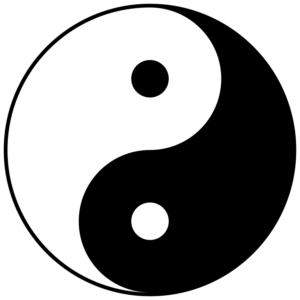 Eastern Religious Symbols
Eastern Religious Symbols
At the heart of both Buddhist and Hindu traditions lies the sacred syllable “Om” or “Aum,” a mystical and resonant vibration believed to be the primordial sound from which the universe emanated. This potent symbol, often chanted or inscribed, serves as a powerful reminder of the interconnectedness of all existence, encapsulating the cyclical nature of birth, life, and death.
In Buddhism, the syllable finds its most revered expression in the “Om Mani Padme Hum” mantra, a profound invocation that pays homage to the Bodhisattva of compassion, Avalokiteśvara. Each component of this mantra holds profound symbolic significance, guiding practitioners towards the embodiment of wisdom, compassion, and the ultimate realization of enlightenment.
The Lotus: A Resplendent Metaphor for Spiritual Growth
Among the most iconic symbols in both Buddhist and Hindu traditions is the lotus flower, a resplendent metaphor for the transformative power of spiritual growth. Just as the lotus emerges from the murky depths, blooming in radiant purity, so too can the human spirit transcend the mire of worldly attachments and desires, blossoming into a state of enlightened consciousness.
The various stages of the lotus’s unfolding petals symbolize the progressive steps along the spiritual path, from the closed bud representing the seeker’s initial awakening to the fully bloomed flower, a potent emblem of the ultimate realization of enlightenment. This profound symbolism serves as a poignant reminder that within each soul lies the potential for transcendence and the capacity to cultivate the virtues of wisdom, compassion, and inner peace.
The Dharma Wheel: Navigating the Eightfold Path
Central to Buddhist teachings is the Dharma Wheel, a powerful symbol that encapsulates the essence of the Buddha’s enlightened wisdom and the path to liberation. With its eight spokes representing the Eightfold Path – right view, right intention, right speech, right action, right livelihood, right effort, right mindfulness, and right concentration – the Dharma Wheel serves as a guiding compass, illuminating the way towards spiritual awakening.
As practitioners strive to embody these principles, the Dharma Wheel serves as a constant reminder to progress steadily along the path, turning the wheel of dharma with each mindful step. This sacred symbol invites seekers to embrace the teachings wholeheartedly, recognizing that true freedom lies in the harmonious integration of wisdom, ethical conduct, and spiritual discipline.
The Bodhi Tree: Sheltering the Seeds of Awakening
Among the most revered symbols in Buddhism is the bodhi tree, the sacred fig tree under whose sheltering branches the Buddha Siddhartha Gautama attained enlightenment. This tree, known as the ficus religiosa, has come to represent the potential for awakening that resides within each being, a potent reminder that the seeds of enlightenment can take root and flourish even in the most unlikely of circumstances.
The bodhi leaf, with its distinctive heart shape, exudes a vibrant energy, symbolizing the playfulness and thoughtfulness that characterize the enlightened mind. Its presence in Buddhist art and architecture serves as a constant reminder to cultivate the qualities of mindfulness, compassion, and equanimity, essential ingredients for the journey towards self-realization.
From the ancient soil of Bodh Gaya, where the original bodhi tree still stands as a living testament to the Buddha’s awakening, this symbol continues to inspire generations of seekers, beckoning them to follow in the footsteps of the Enlightened One and embark on their own transformative journeys.
The Parasol: Sheltering Seekers from Life’s Storms
Derived from the regal traditions of ancient Hindu kingdoms, where parasols were reserved for nobility and royalty, this symbol has taken on profound spiritual significance within Buddhist teachings. Typically depicted with thirteen parasols sheltering the Buddha, this representation signifies his authority and influence, a testament to the far-reaching impact of his teachings.
Yet, beyond its association with power and status, the parasol also symbolizes a protective canopy, shielding seekers from the metaphorical storms of suffering, attachment, and delusion that can so easily engulf the unawakened mind. Just as a physical parasol provides respite from the harsh elements, the Buddha’s teachings offer a refuge, a sanctuary of wisdom and compassion that can guide us through the tumultuous journey of life.
The Mala: A Strand of Interconnectedness
In the spiritual practices of both Buddhism and Hinduism, the mala, a strand of beads used for recitation and meditation, holds deep symbolic significance. Each bead represents an individual entity, yet when strung together, they form an unbroken whole, a powerful metaphor for the interconnectedness of all existence.
As practitioners move from bead to bead, focusing on a mantra, a breath, or the name of a revered figure, they cultivate positive spiritual energy and reinforce the profound truth that no being exists in isolation. Just as the beads are bound together by a single strand, so too are all sentient beings woven into the intricate tapestry of the cosmos, bound by the threads of interdependence and the shared journey towards enlightenment.
The Eternal Knot: Timeless Wisdom, Infinite Potential
Adorning the architectural marvels and sacred spaces of Buddhist and Hindu traditions, the eternal knot, also known as the infinity knot, stands as a powerful symbol of the timeless relevance and infinite potential of spiritual teachings. Despite the passage of centuries, the wisdom imparted by enlightened beings such as the Buddha continues to resonate, transcending the boundaries of time and culture.
This intricate knot, with its endless loops and intertwining pathways, represents the eternal cycle of life, death, and rebirth, a reminder that the journey towards self-realization is a continuous process of growth, transformation, and renewal. Its intricate design invites contemplation, challenging seekers to embrace the complexities of existence while recognizing the underlying unity that binds all things together.
The Lion: Embodying Courage and Spiritual Sovereignty
In the rich tapestry of Buddhist symbolism, the lion emerges as a powerful emblem of courage, strength, and the unwavering determination that characterizes the spiritual journey. Referred to as the “Lion of the Shakyas,” this regal creature represents the Buddha’s royal lineage and his fearless confrontation of injustice and human suffering.
The lion’s roar, often likened to the resounding voice of the Buddha’s teachings, serves as a clarion call, urging seekers to cultivate the courageous heart of the lion king and overcome the obstacles that stand in the way of their spiritual growth. This symbol reminds us that the path towards enlightenment requires an unwavering resolve, a willingness to confront our deepest fears and attachments, and the strength to emerge victorious in the face of adversity.
The Golden Fish: Swimming Against the Currents of Delusion
Originating from the Hindu traditions that revered the sacred rivers of India, the symbol of a pair of golden fish has taken on profound significance within Buddhist teachings. These shimmering creatures represent the ability to move freely through the currents of life, navigating its ebbs and flows with grace and equanimity.
Just as fish swim effortlessly against the tide, the spiritual seeker is encouraged to embrace the challenges and difficulties that arise, recognizing them as opportunities for growth and transcendence. The carefree nature of the fish symbolizes the ultimate freedom from the cycle of rebirth, a state of liberation attained through the cultivation of wisdom, compassion, and a deep understanding of the impermanent nature of all things.
As we navigate the complexities of the modern world, these timeless symbols serve as beacons of wisdom, reminding us of the enduring relevance of the teachings they represent and the boundless potential for growth and transformation that resides within each of us. May we embrace their profound messages, allowing them to illuminate our path and inspire us to cultivate the virtues of mindfulness, compassion, and a reverence for the interconnectedness of all life.
Well Known Religious Symbols

Star of David (Judaism)
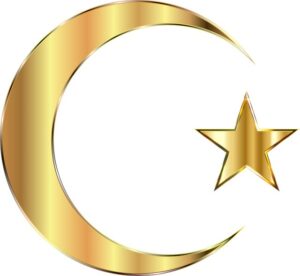
Moon & Crescent (Islam)

Crucifix (Catholicism)

Cross (Christianity)
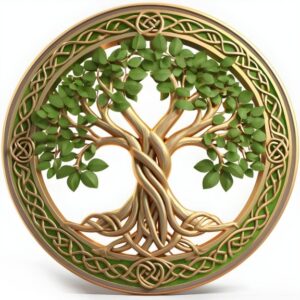
Gnostic Tree (Gnositicism)
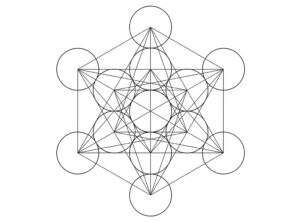
Metatrons Cube (Gnosticism, Kabbalah )

Maltese Cross (Christianity)
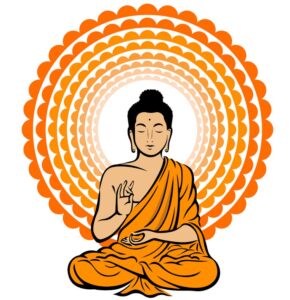
Buddha (Buddhism)
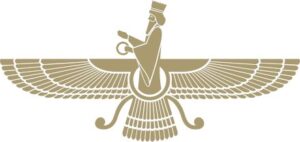
Zoraster (Zorastrianism)
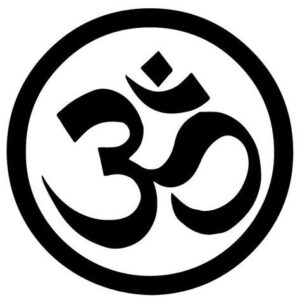
Om (Buddhism, Jainism, Hinduism and Sikhism)
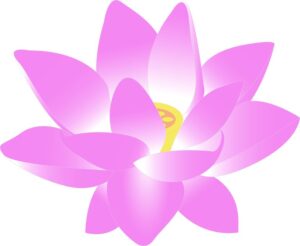
Lotus (Buddhism)

Others (Wiccanism and various Neo-Paganist Religions)
There areand have been many religious symbols of a known mainstream nature through history right up to present day. You may have noticed that some have been left outm and this is not ideal. But the fact is we cannot include all, because there simply isn’t space to cover everything in one piece. So stay tuned for Part 2 where we will cover even more Icons, Sigils, Effigies and Symbols,including those of ceremonial magic and more.
Be sure to subscribe for updates and feel free to leave us commentary, we enjoy discussing these topics with our readers and I, the author read every comment and would enjoy to hear your feedback.


